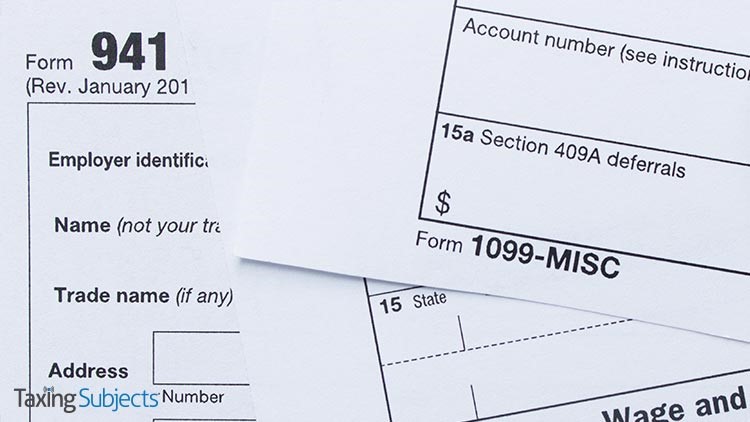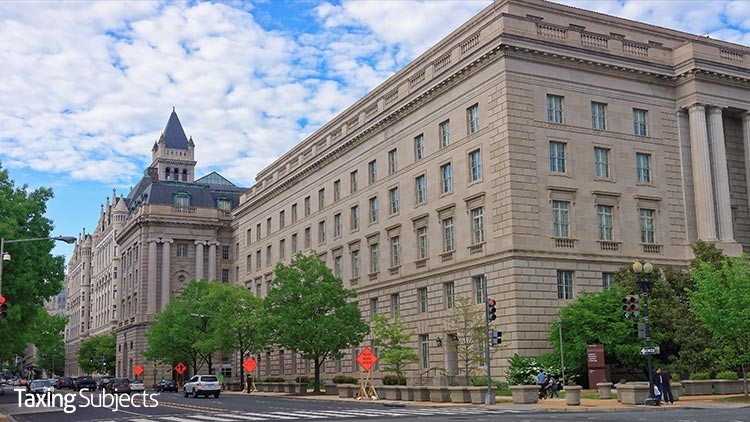by | Jul 30, 2020 | Tax Tips and News
Taxpayers can dip into Coronavirus Aid, Relief, and Economic Security Act-specified retirement accounts without suffering a penalty, according to an Internal Revenue Service press release published yesterday. The reminder comes days after the $600 unemployment benefits included in that legislation expired.
How do the retirement account withdrawals work?
“Under the CARES Act, individuals eligible for coronavirus-related relief may be able to withdraw up to $100,000 from IRAs or workplace retirement plans before December 31, 2020, if their plans allow,” the IRS writes. “In addition to IRAs, this relief applies to 401(k) plans, 403(b) plans, profit-sharing plans, and others.”
The IRS outlines four ways the CARES Act makes pulling money from retirement accounts easier for those facing hardships during the pandemic, including penalty-free repayments: “These coronavirus-related withdrawals:
- May be included in taxable income either over a three-year period (one-third each year) or in the year taken, at the individual’s option.
- Are not subject to the 10% additional tax on early distributions that would otherwise apply to most withdrawals before age 59½,
- Are not subject to mandatory tax withholding, and
- May be repaid to an IRA or workplace retirement plan within three years.”
Loans are also available from certain retirement plans until September 22, 2020. The IRS says taxpayers can “borrow as much as $100,000 (up from $50,000) from a workplace retirement plan, if their plan allows.” However, IRAs are not eligible for this loan program.
To qualify for a retirement-plan withdrawal or loan, taxpayers must satisfy one of the following requirements:
- Be diagnosed with COVID-19 by a CDC-approved test
- Have a spouse or dependent diagnosed by an approved test
- Show that COVID-19 has caused financial hardship
Taxpayers who need to satisfy the financial-hardship requirement must show that they or their spouse have lost a job, worked reduced hours, been paid less, had to close a business, or some other similar difficulty due to the coronavirus pandemic. Many American businesses have been forced to close or adopt modified schedules due to local restrictions—restaurants, for example, have been hard hit by stay-at-home orders and limits on social gatherings.
Notice 2020-50 and an FAQ page on IRS.gov include further details about making withdrawals and taking loans from qualifying retirement plans.
Source: IR-2020-172
– Story provided by TaxingSubjects.com
by | Jul 29, 2020 | Tax Tips and News
The Tax Cuts and Jobs Act (TCJA) of 2017 famously adjusted the income tax brackets and lowered the corporate tax rate to 21 percent, but the sweeping legislation contained a host of tax-related changes. The Coronavirus Aid, Relief, and Economic Security (CARES) Act of 2020 made further tweaks—like adjusting the then-new limitation on deducting business interest expenses—that forced the Internal Revenue Service to work on a new set of final regulation.
This week saw the IRS announce the publication of the final regulations for business interest expense deductions. Obviously, the regulations outline how the limitation is applied by the IRS and which types of businesses may not be subject to it.
How is the business interest expense deduction limitation applied?
The final regulations limit business interest expense deductions to an inflation-adjusted gross receipts threshold. The limitation applies to tax years after December 31, 2017, and the threshold for tax year 2020 is $26 million.
The IRS says the gross-receipts threshold is calculated as a sum of the following:
- “the taxpayer’s business interest income;”
- “30 percent (or 50 percent, as applicable) of the taxpayer’s adjusted taxable income; and”
- “the taxpayer’s floor plan financing interest expense.”
Not all businesses are subject to the limitation. “A real property trade or business or a farming business may elect to be excepted from the business interest expense limitation,” the IRS explains. “However, taxpayers cannot claim the additional first-year depreciation deduction for certain types of property held by the electing trade or business.”
Further, the IRS says it published three documents that flesh out guidance for the business interest expense deduction limitation:
- Proposed regulations “[addressing] more complex issues related to the amendments made by the CARES Act”
- A safe harbor for “qualified residential living facilities to treat such trade or business as a real property trade or business solely for the purposes of qualified as an electing real property trade or business”
- An FAQ detailing aggregation rules for the gross receipts test and “[determining] whether a taxpayer is a small business that is exempt”
Visit IRS.gov to learn more about the business interest expense deduction limitation.
Source: IR-2020-171
– Story provided by TaxingSubjects.com
by | Jul 28, 2020 | Tax Tips and News
The Security Summit’s “Working Virtually: Protecting Tax Data at Home” campaign will stretch over five weeks, providing remote-work data security recommendations for tax professionals. Whether you are a work-from-home veteran or were forced to convert the dining room table into a makeshift office, these tips can help protect client data from identity thieves.
The second week of “Working Virtually” focuses on multi-factor authentication (MFA). While included in the “Security Six” protections highlighted last week, the Summit is specifically namechecking MFA for one simple reason: It works.
What is multi-factor authentication?
Multi-factor authentication protects online accounts by requiring additional user-provided information during the login process. In some cases, that means entering a code sent to your email address, mobile phone, or third-party authentication application—which are the most secure of the three options.
Finding a suitable authentication app will largely depend on the account or software you’re trying to protect. Most platforms that support MFA will list the authentication methods they support, but the IRS says you may need to “use a search engine for ‘Authentication apps’ to learn more.”
Once you find the authentication app you need, it’s just a matter of downloading the program to your smartphone and following the setup instructions.
Why is multi-factor authentication effective against identity thieves?
MFA prevents identity-theft attacks by requiring a code that scammers can’t easily steal with phishing scams. Outside of tricking victims into providing login credentials, identity thieves like to hide malware in email attachments and links that is designed to steal victims’ passwords.
“However, with multi-factor authentication, it’s unlikely the thief will have stolen the practitioner’s cell phone so he would not receive the necessary security code to access the account,” the IRS explains. “This protects the tax pro’s account information.”
Will my tax preparation software offer multi-factor authentication?
The IRS says “all tax software providers will be required to offer multi-factor authentication options on their products that meet higher standards [in 2021].” Despite generally being optional for users, it’s a good idea to enable MFA in your tax software—especially if you’re working remotely.
Source: IR-2020-170
– Story provided by TaxingSubjects.com
by | Jul 27, 2020 | Tax Tips and News
The Internal Revenue Service has issued new guidance to reconcile advance payments of refundable employment tax credits and recapture the benefit of those credits when needed.
The guidance is provided in a temporary regulation and a proposed regulation.
The regulations authorize the IRS to assess erroneous refunds of the credits paid under both the Families First Coronavirus Response Act (known as the Families First Act) and the Coronavirus Aid, Relief, and Economic Security Act, also known as the CARES Act.
In general, the Families First Act requires employers with fewer than 500 employees to provide paid sick leave for up to 80 hours and paid family leave for up to 10 weeks if an employee is unable to work – or telework – due to COVID-19. Eligible employers are entitled to fully refundable tax credits to cover the cost of the leave to be paid.
The CARES Act provides additional relief, allowing an additional credit for employers who experience economic hardship due to COVID-19. Eligible employers who pay qualified wages to their employees are entitled to a credit for employee retention.
The IRS is revising employment tax credit forms.
The IRS is in the process of revising Form 941, Form 943, Form 944, and Form CT-1. The changes will allow employers to use the returns to claim paid sick and family leave and the employee retention credits.
The agency is also creating a new form, Form 7200, Advance Payment of Employer Credits due to COVID-19, that can be used by employers to request an advance of the credits. If the request is granted, the qualified employer can get advance payment of the credits up to the total allowable amounts.
Employers are required to reconcile any advance payments claimed on Form 7200 with the total credits claimed and total taxes due on their employment tax returns.
An erroneous refund is defined by the IRS as “any refund of these credits paid to a taxpayer that exceeds the amount the taxpayer is allowed.” The IRS says it must seek repayment in those cases.
For more information on employer credits, check out Employer Tax Credits on IRS.gov.
– Story provided by TaxingSubjects.com
by | Jul 24, 2020 | Tax Tips and News
Internal Revenue Service Commissioner Chuck Rettig had high praise for the nation’s tax professionals this week, as he addressed the IRS Nationwide Tax Forum.
The event, usually held in various cities around the U.S., was forced online this year by the pandemic.
In their coverage of the event, Accounting Today’s Editor-in-Chief, Michael Cohn reports Rettig thanked tax practitioners for their cooperation during the extended tax season. He said while many tax professionals had a challenging tax season, for many, it’s not over yet. Until the October 15 deadline passes, Rettig added, there are still returns to be filed.
Kindred Spirit
Rettig was a tax practitioner himself before taking the reins of the IRS some two years ago, and his remarks show he hasn’t forgotten his roots.
“I think it’s important at the outset to thank all of you for the critical support you provided this filing season, and every year,” Rettig said. “As tax professionals, you play an essential role in the tax system by helping your clients fulfill their filing obligations. We should never forget how important your efforts are to tax administration, and to our country.”
Cohn writes that the commissioner also thanked tax pros for the input the IRS has gotten from them on a number of issues. He stressed that the IRS does indeed pay attention – whether or not the agency follows the recommendations.
“There are reasons why the IRS may not fully change into something that you might think would be obvious. It’s a big operation, a federal agency with a lot of different responsibilities, but that doesn’t mean that we don’t listen and pay attention to suggestions that people have,” Rettig said. “So your efforts to try to help us are well received and will never be lost on us.”
When he was a tax professional, Rettig remembered, he thought that tax administration doesn’t belong to anyone. He still thinks that, he said, but the real answer is wider now. “It belongs to everyone, so the IRS has been laboring more on trying to get it right. I think that as tax professionals we all have a piece of that responsibility.”
Entering the Virtual World
The commissioner is “excited” about the IRS’ future, Accounting Today reports. Cohn writes that Rettig points with pride to the agency’s swivel to telework during the early weeks of the pandemic, when some 56,000 workers were working from home, out of a total workforce of about 80,000.
Furthermore, Rettig said, the IRS developed two additional online tools during the pandemic that more fully use virtual access to personal tax information. The Non-Filers tool allows people who normally do not have an obligation to file taxes the ability to enter basic information so they could get their Economic Impact Payments (EIPs) more quickly. The Get My Payment tool lets many taxpayers check the status of their payments.
Rettig conceded that many people still have yet to get their EIP – a common complaint probably heard by many tax pros as well. While some may point to instances when the system broke down, Rettig said, the employees of the agency did a great job to get payments to the right people in millions of cases.
“We are working hard to get to the people that we have not gotten to yet in terms of payment,” Commissioner Rettig said. “There are some scenarios that did not come together as we would have hoped they would have come together, but I think it’s disrespectful to say to the employees of the Internal Revenue Service, considering the effort that they put forth from March to try to get this right.”
Next up on the agenda, Cohn reports, is a new round of stimulus legislation and the commissioner expects the IRS to repeat its distribution role. “And we will. We will do it as successfully as we can, and we will put everything back into place,” Rettig said. “To be on board during this period of time has been spectacular to watch it happen.”
Our thanks to Michael Cohn and Accounting Today for their original article.
– Story provided by TaxingSubjects.com





